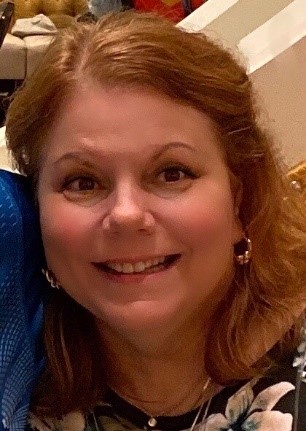By Valerie Snavely
Submitted by: Kerensa Peterson, NBOME and Todd Lash, The Ohio State University

I always wanted to be a doctor when I grew up. That dream died a quick death during junior high, when it became clear that any math beyond the bare basics completely eluded even the slightest grasp by my arts-loving brain. (The PEMDAS train left the station without me.) Fast-forward to college and a journalism major where – among all of us junior wordsmiths – the standard joke was that we were there because algebra wasn’t required. Cue a 40-year career as a writer, editor and PR/marketing coordinator. Yet, even as I wrote, edited and promoted, my interest in the healthcare field never dwindled. To get my “fix,” I volunteered in hospitals as well as at an inpatient hospice facility, working directly with people who were dying and their families. (The latter was an intensely meaningful privilege.) I even entertained the notion of becoming a registered nurse as a second career and took all of the prerequisite college courses – including remedial math! But my mother became ill and needed me, and I never pursued it further.
After Mom died, I was fortunate to be chosen during 2013 as a standardized patient (SP) for The Ohio State University’s College of Medicine. Not only was this a healthcare-related opportunity, I quickly discovered that I absolutely LOVED working with the students, staff and my fellow SPs! It was incredibly gratifying to realize that I had the opportunity to play a small role in training future professionals. Eagerly, I looked forward to the classroom and one-on-one encounters, and to visiting with my peers. Then, COVID took over and everyday life stopped on a dime. With personal safety of paramount importance, students went home and in-person SP work was suspended.
Eventually, technology prevailed and after several months, we began to see students again, via the ubiquitous Zoom platform. At first, remote contact seemed strange and somewhat impersonal. During our before-and-after encounter meetings, my cohorts, the facilitators and I resembled a 21st Century “Brady Bunch” or “Hollywood Squares” redo, with more interesting backgrounds. Behind the scenes, the SP staff conquered the beyond-Herculean (and probably thankless) task of routing and monitoring traffic on an electronic freeway with countless entrances, exits, users and schedules. They make that job seem easy.
So, what’s it like, working with students from the comfort of my family room, hoping my cats don’t decide to participate? It’s different, but no less gratifying. I quickly learned that Zoom and Apple aren’t BFFs, and started using my Windows laptop for meetings/encounters, relying on an iPad to complete evaluations. This cross-tech situation works well. Despite adjusting my screen appearance to the max, however, my Zoom self continues to resemble Casper the Friendly Ghost. To quote a current mantra: It is what it is.
Unfortunately, some of the human-ness of personal encounters doesn’t translate remotely. Subtle body language, an encouraging glance, a jittery leg - all are lost on a screen of talking heads. But the eye contact, the vocal intonations and - of course - the basic, required activity are present. So are the nerves – the students hoping that technology comes through for them during this strange yet important situation.
I believe that telemedicine has a huge future that will progress quickly, in no small part because of COVID. The students seeing SPs remotely are getting fantastic experience in what that future could mean for them as healthcare professionals. In reality - as in school - the technology won’t always work perfectly. They’re learning via the new reality for us all.
As for me, while I greatly miss interacting in person with my fellow SPs and our staff, I’m delighted to at least be able to SEE them on a screen and hear their voices! We still appreciate the ability to chat with one another before or after cases, and for now, that must be enough. My responsibility is to the students and our program. I’m grateful that remote learning exists and hope that in whatever manner, I can continue to be of value as we move ahead.
Publications Committee Mission: “To bring high quality reporting of current research, trends, techniques and information regarding SP methodology and other relevant industry articles to the attention of the membership through the web-based ASPE eNews blog.”
Please provide comments, questions or suggestions about the ASPE eNews Blog here.
